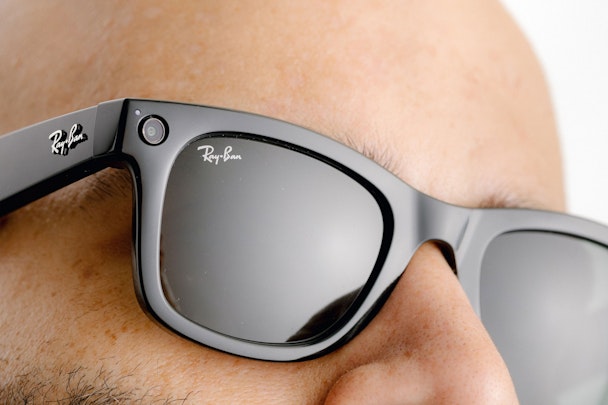What Ray-Ban Stories tells us about the future of social
Facebook has rolled out its much-talked-about wearable ‘smart’ glasses. The company partnered with eyewear brand Ray-Ban to create ‘Ray-Ban Stories’, which is available now for around £300 and can be paired with a new Facebook View app in order to download and edit video and photos taken using the glasses.

Wilderness on how Ray-Ban is paving the way for a future where smart wearables and mixed-reality devices will be normal
However, initial reports and early product reviews have been damning, with many suggesting Ray-Ban Stories is no more than nice frames with a dual camera built in. Obviously, this is the first step for Facebook in the smart glasses space, but the launch of Ray-Ban Stories raises more questions than answers for the company. Namely, what’s the point here? Why not just use your phone? And who is it for anyway?
To answer the first question you have to look at where Mark Zuckerberg is trying to take Facebook. He is moving the company beyond a social website, or mobile app company, to become the pre-eminent mixed-reality company of the future. The company recently announced Horizon Workrooms, bringing virtual reality (VR) to the office, and Zuckerberg has talked at length about wanting Facebook to build the metaverse, seen by many as the next phase of the internet as mixed-reality experiences become ever more normal.
Seen in this way, Ray-Ban Stories makes a lot more sense as Facebook attempts to carve out a new path for itself, with wearable smart glasses just one of the many products that will move this technology into the mainstream.
The second question seems harder to answer. The phone has for some time now moved way beyond its initial purpose and is for most a pocket-sized tablet computer. Leading tech companies have seemingly been obsessed with the idea of transporting that technology into glasses with the first the ill-fated Google Glass, and secondly the unmemorable Snap Spectacles.
From the early reviews of Ray-Ban Stories, the question of why someone wouldn’t just use their phone is still relevant. The product needs the phone to work, it has to be paired with the Facebook View mobile app, and to create a story is seemingly more difficult given the lack of perspective when wearing the device than simply having it to hand. But many suggest we are at the start of what will be a wearable and smart tech revolution, and smart glasses are just one solution of what could be the next ubiquitous device beyond the smartphone.
However, it’s the last question that possibly exposes Ray-Ban Stories as a non-starter – and as doomed for the same path as Google Glass before it. Aimed squarely at the influencer crowd, the glasses are meant to be for those fleeting moments when you don’t have your phone to hand, but seemingly you have pre-connected the Ray-Ban Stories you are wearing to your mobile device. Zuckerberg himself posted a teaser video of him wearing a pair while out in the ocean – even though the glasses are not built to get wet...
Will the influencer crowd really take to wearing a set of smart glasses, even if they are Ray-Bans? Many have suggested even the thought of it is creepy, not to mention how others might feel having their movements recorded without so much as someone holding a device in front of them to know it is happening. I’m sceptical that smart glasses for social sharing will ever become a ubiquitous product. But by utilizing the Ray-Ban brand name, Facebook has side-stepped some of the toxicity surrounding its own brand to see how an early iteration of a smart glasses product could go down.
Interestingly, the smart glasses are not a Facebook-branded product, unlike the Oculus headset or Portal video device. Instead Facebook is providing the tech and hardware that goes into the smart glasses, and Ray-Ban is taking care of the rest in terms of design, marketing and sales of the device.
For Facebook, the goal of Ray-Ban Stories is to “lay the groundwork in the minds of consumers for the many, many, future products that we have to come in this space,” according to Andrew Bosworth, vice-president of augmented and virtual reality at Facebook when giving comment recently to The Verge.
It seems that Facebook wants to use Ray-Ban for its global eyewear distribution and solid brand name to push out its own hardware, hoping to become the default platform for the mixed-reality and smart vision future. Whether smart glasses are the future or not, it seems inevitable that we are moving to a place where smart wearables and mixed-reality devices are going to become ever more commonplace.
Tom Jarvis, founder and chief executive officer at Wilderness Agency.
Content by The Drum Network member:

Wilderness
The World's First Social Media Transformation Agency. We transform the strategy, management, and operations of the world’s most beloved brands. Part of the...
Find out more
